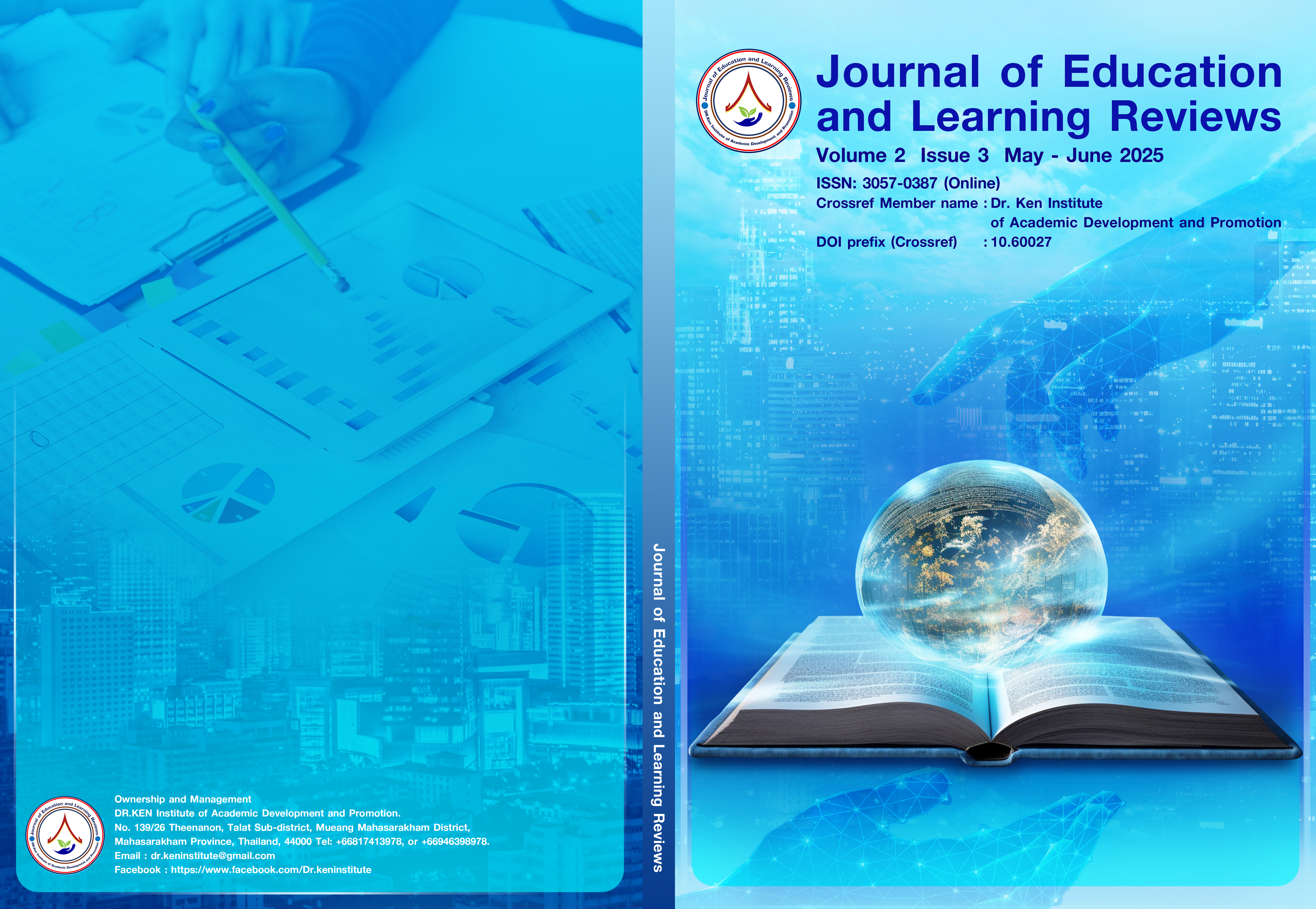Teaching Chinese Intangible Heritage in English-- An Interdisciplinary Pedagogical Design for Paper-cutting at Primary and Secondary Levels
Main Article Content
Abstract
Background and Aim: In 2022, the Ministry of Education of China revised the guidelines for its 9-year compulsory education, and comprehensive social practice training, such as paper-cutting, cooking, and housekeeping, was integrated into the curriculum for primary and secondary schools. Comprehensive practice schools were established in each district to make full use of the potential resources to realize this educational objective. This study reports a novel approach in the emerging area of teaching paper-cutting to Chinese kids through English.
Materials and Methods: This study reported a preliminary attempt to teach students the intangible cultural heritage – Chinese paper-cutting through English. 20 students recommended by the students from 12 classes received the semi-structured interview.
Results: The result of the interview showcased the increase in students’ awareness of cultural learning and English use, and their motivation to get involved in the creative process of producing works. It also suggests a new challenge to enhance the training outcome by implementing the training program with more interactions and presentation chances.
Conclusion: This pioneering interdisciplinary approach lays a foundation for future curriculum innovation, contributes new insights to this issue, and combines language learning with cultural preservation. Elaborate research is needed on how to get the class better organized with more efficiency.
Article Details

This work is licensed under a Creative Commons Attribution-NonCommercial-NoDerivatives 4.0 International License.
Copyright on any article in the Journal of Education and Learning Reviews is retained by the author(s) under the Creative Commons Attribution-NonCommercial-NoDerivatives 4.0 International License. Permission to use text, content, images, etc. of publication. Any user to read, download, copy, distribute, print, search, or link to the full texts of articles, crawl them for indexing, pass them as data to software, or use them for any other lawful purpose. But do not use it for commercial use or with the intent to benefit any business.

References
Anagnostou, M., Lazou, A., Mele, E., & Ktena, A. (2022). Philosophical games in primary education: An interdisciplinary approach. Education and New Developments 2022, 1, 567–571. https://end-educationconference.org/wp-content/uploads/2022/07/2022v1end126.pdf
Barghi, R., Zakaria, Z., Hamzah, A., & Hashim, N. H. (2016). Heritage education in the primary school standard curriculum of Malaysia. Teaching and Teacher Education, 61, 124–131.
Csorba, D. (2013). Design and delivery of a training program for teachers in primary education: Interdisciplinary organization for the key competences training for young schoolchildren. https://www.researchgate.net/publication/257718919
Dagnino, F. M., Ott, M., & Pozzi, F. (2015). Addressing key challenges in intangible cultural heritage education. International Journal of Heritage in the Digital Era, 4(2), 131–145.
Dündar, E., & Sümbül, M. (2024). Uncovering the role of English language teaching coursebooks in safeguarding intangible cultural heritage. Culture and Education, 36(4), 942–969.
Fang, B. (2013). Household chores are part of a child's education. China Daily. https://www.chinadaily.com.cn/opinion/2013-05/02/content_16466815.htm
Johnson, L., & Lee, H. (2020). The role of arts and crafts in child development. Journal of Creative Education, 15(3), 45–60.
Learning Corner. (2025). Glossary: Integrated learning. https://learningcorner.co/knowledge-base/glossary/integrated-learning
López-Fernández, J. A., Medina, S., López, M. J., & García-Morís, R. (2021). Perceptions of heritage among students of early childhood and primary education. Sustainability, 13(19), Article 10742. https://doi.org/10.3390/su131910742
López-Fernández, J. A., Medina, S., López, M. J., & García-Morís, R. (2021). Perceptions of heritage among students of early childhood and primary education. Sustainability, 13(19), Article 10742. https://doi.org/10.3390/su131910742
Lowyck, J. (2002). Pedagogical design. In H. H. Adelsberger, B. Collis, & J. M. Pawlowski (Eds.), Handbook on information technologies for education and training (pp. 199–212). Springer. https://doi.org/10.1007/978-3-662-07682-8_13
Lythcott-Haims, J. (2016). How to raise an adult: Break free of the overparenting trap and prepare your kid for success. Henry Holt and Co.
Ministry of Education (MOE). (2022). Revised guidelines on compulsory education curriculum. MOE of China.
Ocal, T. (2016). Necessity of cultural historical heritage education in social studies teaching. Creative Education, 7(3), 385–393. https://www.scirp.org/journal/paperinformation?paperid=64494
Ott, M., Dagnino, F. M., & Pozzi, F. (2015). Intangible cultural heritage: Towards collaborative planning of educational interventions. Computers in Human Behavior, 51(Part B), 1314–1319. https://doi.org/10.1016/j.chb.2014.11.039
Smith, A. (2018). Fine motor skills and artistic activities in early childhood. Early Childhood Research Quarterly, 42, 123–134.
Sonja, A., Susanne, B., Martina, D., Sivbritt, D., Victoria, M., & Tove, W. (2010). Interdisciplinary education in a comprehensive school: Can a deep understanding occur? US-China Education Review, 7(9), 34–46.
UNESCO. (2009). Chinese paper cut. Intangible Cultural Heritage Lists. https://ich.unesco.org/en/RL/chinese-paper-cut-00219
University of Hawaii at Manoa. (2025). Chinese paper cut. https://manoa.hawaii.edu/library/about/news-events/exhibits/chinese-paper-cut/
Wang, Y. (2019). Cultural heritage and art education: A case study of Chinese paper cutting. International Journal of Art & Design Education, 38(2), 345–357.





